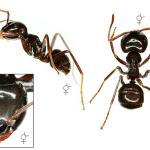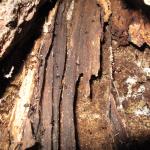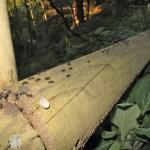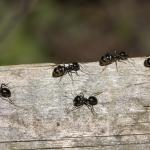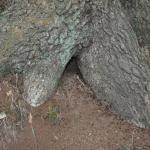This species, the 'jet-black ant', is not rare in southern England and Wales but always tends to be locally uncommon, with often only a few isolated nests known to recorders in any one locality. There appears to be contraction in the range of L. fuliginosus in northern and central England and also in the south of the Irish Republic. The species has so far not been found in Scotland. It is quite likely, however, that this paucity of records is due to a lack of recent recording effort in certain areas, notably: Cumbria, Lancashire, Cheshire, Avon, Gloucestershire, Leicestershire and Cambridgeshire; Isle of Man and Ireland. Unlike Formica rufa there are probably more local populations yet to be discovered as, despite its conspicuous features (quite large, shiny black workers foraging in long trails), this species often goes unnoticed.
This species is not currently threatened. However, the abundance of their host species and the availability of suitable, undisturbed old trees, hedgerows and dead timber for nesting could become limiting factors.
Due to its complex biology, Lasius fuliginosus seems to lead a precarious existence. It is a semi-social parasite of a semi-social parasite; that is, the species establishes its colonies in those of the Lasius umbratus group which are in turn founded in colonies of the Lasius niger/flavus species complexes. The chances of success for a founding queen under these circumstances may well result in the highly localised distribution of colonies seen in the field. Occasionally, nests are found with the black L. fuliginosus and yellow or brown host workers still intermixed. The workers often forage on trails leading some distance from the nest to trees where they tend Homoptera for honeydew. Most of their diet appears to come from this source and they rarely seem to take insect prey; however, dead aphids are occasionally seen being carried back in workers' mandibles and they will take dead insects if offered. The nests themselves are made from a type of carton (wood fragments cemented together with saliva), usually in the hollow of a partially rotted tree, log or stump, or within a hedge bank or wall.
1997


